As the days get shorter and the nights grow colder, there’s nothing quite as comforting as a hearty bowl of beef stew. This classic dish, with its tender chunks of beef, flavorful vegetables, and rich broth, is the perfect way to warm up from the inside out. But achieving the perfect beef stew requires attention to detail, from selecting the right cut of beef to mastering the cooking process. This guide will walk you through each step, ensuring a delicious and satisfying stew every time.
Choosing the right cut of beef is crucial. Cuts with good marbling, like chuck, round, or brisket, break down during slow cooking, creating tender and flavorful meat. Proper seasoning and preparation of the ingredients, along with selecting the best cooking method will ensure a delicious and satisfying beef stew.
Choosing the right cut of beef is crucial for a perfect beef stew. Look for cuts with a good amount of marbling, such as chuck, round, or brisket. These cuts contain sufficient fat and connective tissue that break down during slow cooking, leading to tender and flavorful meat.
Avoid lean cuts like sirloin or tenderloin, as they can become tough and dry when cooked for an extended period. Furthermore, consider how large or small the beef cubes are. Larger chunks will take longer to cook and may not become as tender as smaller pieces.
Aim for uniform pieces to ensure even cooking and a consistent texture throughout the stew. By selecting the right cut and preparing it properly, you set the foundation for a delicious and satisfying beef stew.
Table of Contents
Preparing and Seasoning the Ingredients
Before cooking, it’s essential to properly prepare and season the ingredients for your beef stew. Start by patting the beef cubes dry with paper towels to ensure they brown evenly. Season the meat with salt and pepper, then dredge it in flour to create a flavorful crust and help thicken the stew as it cooks.
In addition to seasoning the beef, don’t overlook the importance of seasoning the vegetables. Onions, carrots, and celery are common additions to beef stew and can greatly enhance the overall flavor. Sautéing these vegetables in the same pot used to brown the beef allows them to absorb the rich flavors left behind, adding depth to the stew.
By taking the time to properly season and prepare each ingredient, you lay the groundwork for a well-balanced and delicious beef stew.
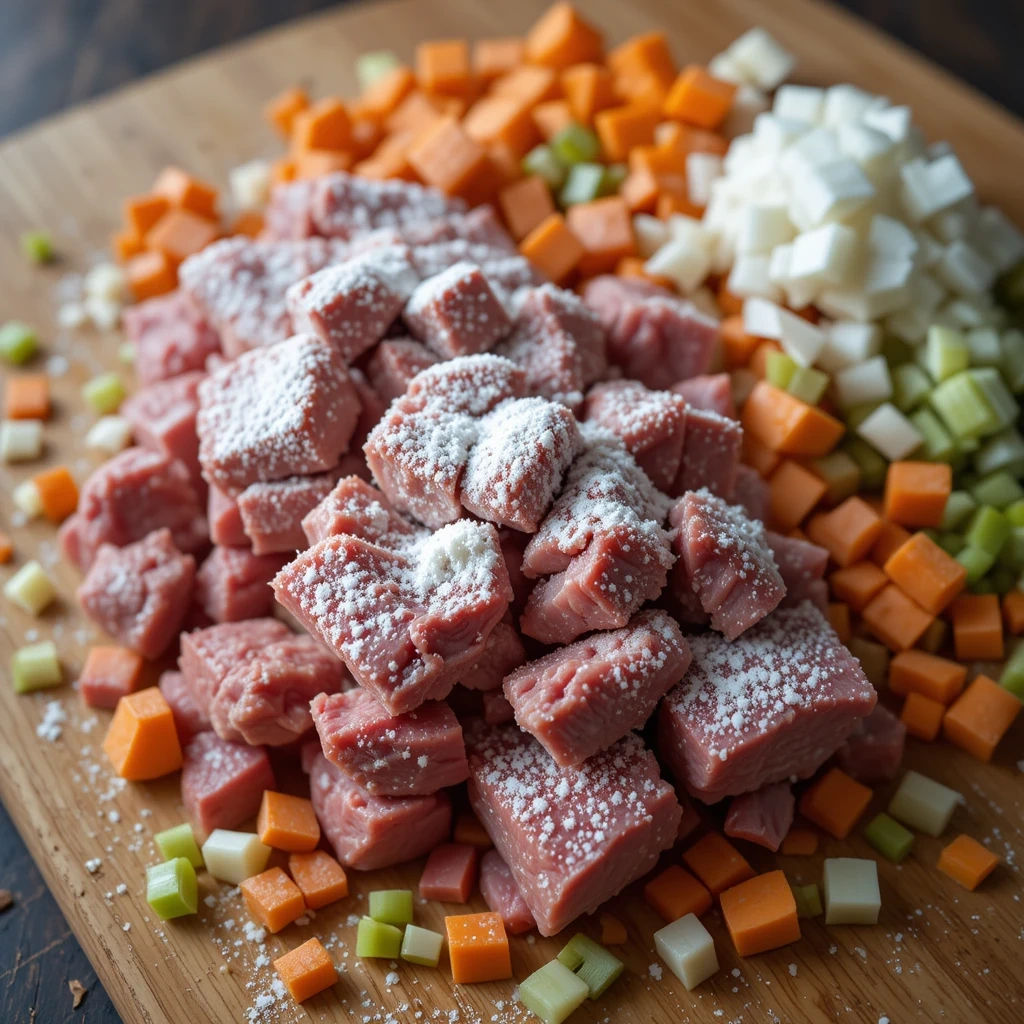
Choosing the Best Cooking Method
When it comes to cooking beef stew, there are several methods to choose from, each with its own advantages. The most traditional method is simmering on the stovetop in a heavy-bottomed pot or Dutch oven. This allows for even heat distribution and ample space for the stew to develop rich flavors over time.
A slow cooker can be a handy solution for individuals with busy lifestyles. Slow cookers allow for long, low-temperature cooking, resulting in tender meat and well-developed flavors without needing constant attention. For those who prefer a hands-off approach, pressure cookers can significantly reduce cooking time while still producing a flavorful and tender beef stew.
Whichever method you choose, be sure to adjust cooking times and liquid levels accordingly to achieve the perfect texture and consistency.
Delve into the rich flavors and tender textures of Beef Cheeks with this comprehensive guide from Veibrant Recipes. This article explores the unique qualities of beef cheeks, emphasizing their high collagen content that, when slow-cooked, transforms into a melt-in-your-mouth delicacy. Whether you’re interested in braising, slow cooking, or sous vide methods, the guide provides step-by-step instructions, essential ingredient lists, and tips to achieve perfect results. Additionally, it offers insights into selecting the best cuts, pairing suggestions, and storage techniques to make the most of this underrated meat.

Adding Flavorful Vegetables and Herbs
| Vegetable/Herb | Flavor Profile | Usage |
|---|---|---|
| Garlic | Pungent, savory | Sautéing, roasting, seasoning |
| Basil | Sweet, peppery | Salads, pasta, sauces |
| Ginger | Spicy, earthy | Stir-fries, marinades, tea |
| Onion | Sweet, pungent | Soups, stews, sautés |
In addition to the beef, vegetables and herbs play a crucial role in enhancing the flavor profile of your stew. Classic choices like carrots, potatoes, and peas not only add texture and color but also contribute their own unique flavors to the dish. When selecting herbs, consider using a combination of fresh thyme, rosemary, and bay leaves to infuse the stew with aromatic notes.
These herbs complement the richness of the beef and add depth to the overall flavor profile. To maximize flavor extraction, consider adding vegetables and herbs at different stages of cooking. For example, adding root vegetables at the beginning allows them to soften and release their flavors into the stew, while adding delicate herbs towards the end preserves their fresh, vibrant notes.
By thoughtfully incorporating a variety of vegetables and herbs, you can elevate your beef stew to new heights of flavor complexity.
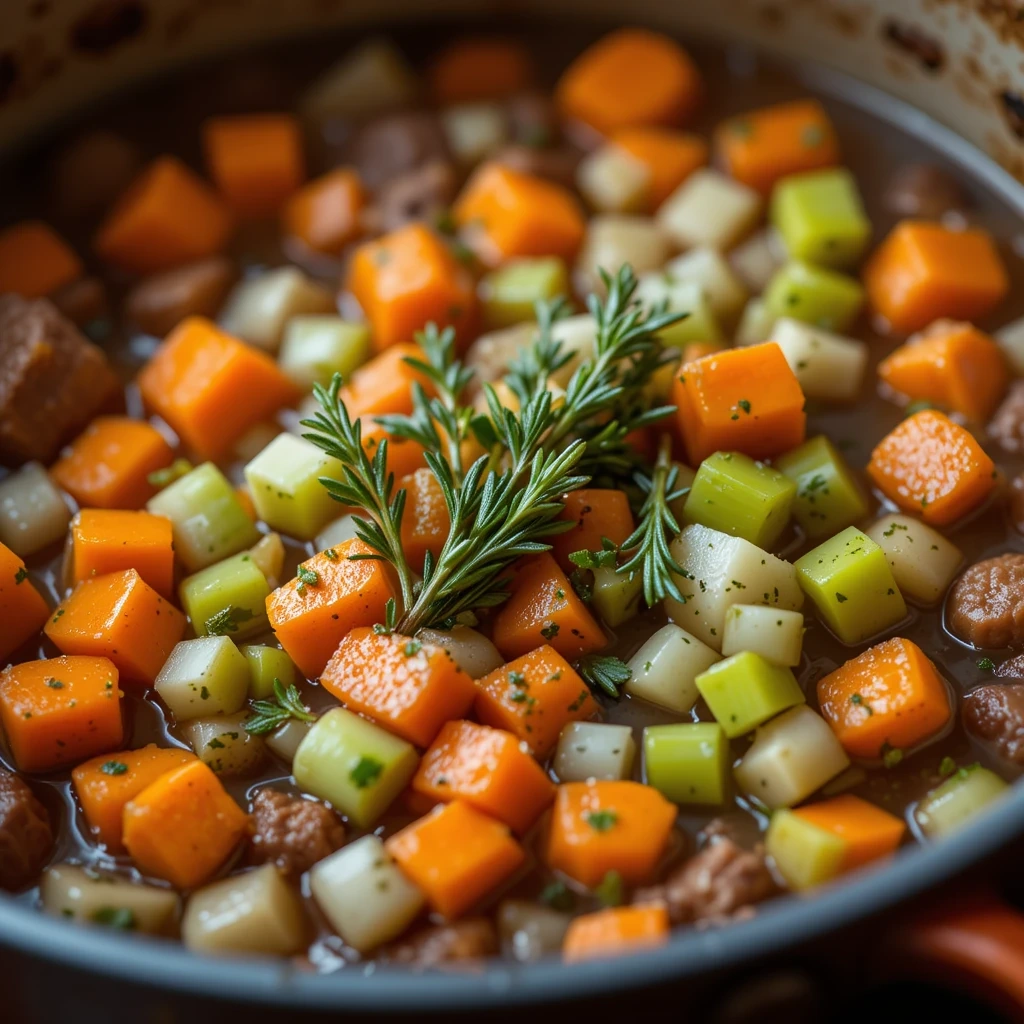
Achieving the Perfect Consistency
The ideal beef stew strikes a balance between a rich, flavorful broth and tender chunks of meat and vegetables. Achieving this perfect consistency requires careful attention to cooking times and liquid levels. During the cooking process, monitor the stew closely to ensure that it doesn’t reduce too much or become overly thick.
If needed, add additional broth or water to maintain a desirable consistency. Conversely, if the stew is too thin, you can thicken it by creating a slurry with flour or cornstarch and adding it gradually until reaching the desired thickness. Additionally, consider allowing the stew to rest for a short period after cooking.
This gives the flavors time to blend and the stew to achieve its ideal consistency before being served. By paying close attention to these details, you can ensure that your beef stew has a luscious, velvety texture that is both comforting and satisfying.
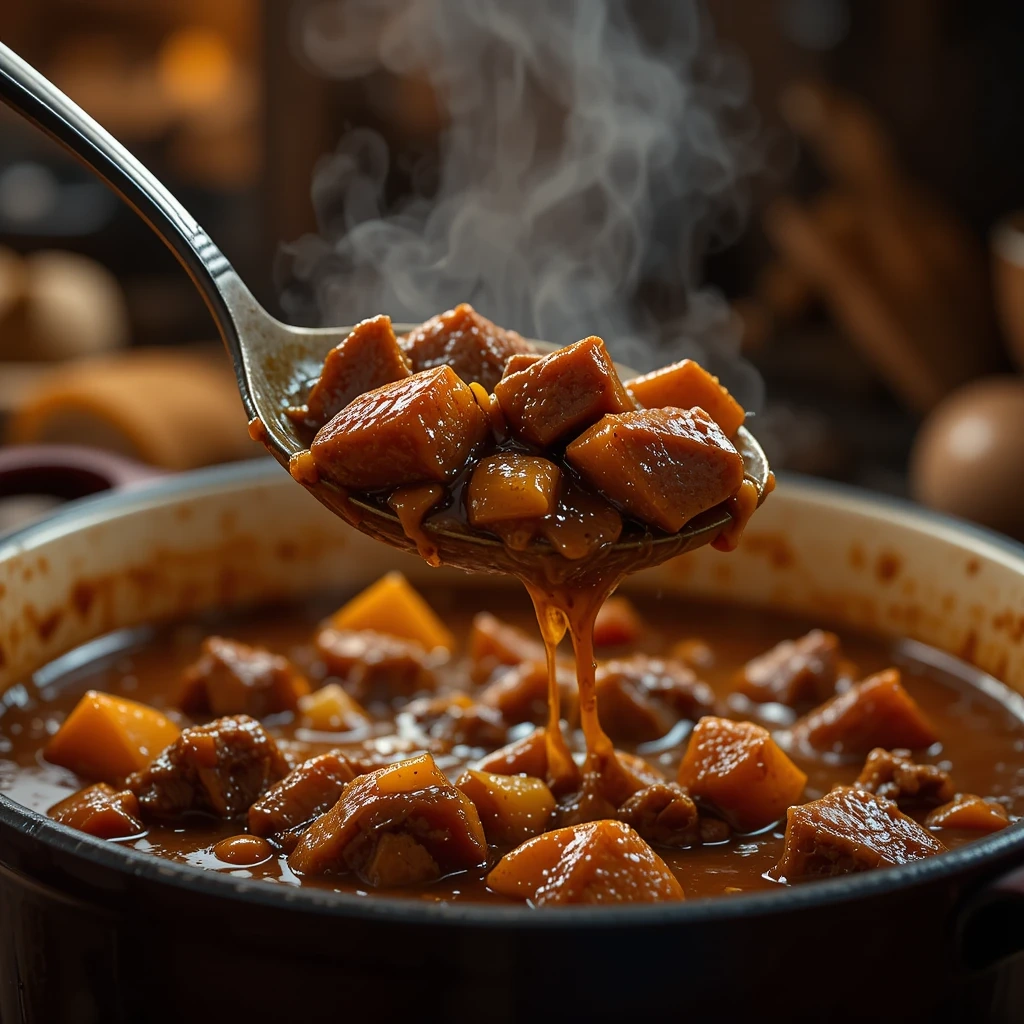
Serving and Garnishing the Beef Stew
When it comes time to serve your beef stew, consider garnishing each bowl with a sprinkle of freshly chopped parsley or a dollop of sour cream. These finishing touches not only add visual appeal but also provide a burst of freshness and contrast to the rich flavors of the stew. Pairing your beef stew with crusty bread or fluffy mashed potatoes can further enhance the dining experience by providing complementary textures and flavors.
The warmth and heartiness of these accompaniments perfectly complement the comforting nature of a well-prepared beef stew. Consider serving your beef stew in individual bowls or deep plates to showcase its inviting appearance and allow guests to fully appreciate its aroma and flavors. By paying attention to presentation and pairing options, you can elevate your beef stew from a simple dish to a memorable dining experience.
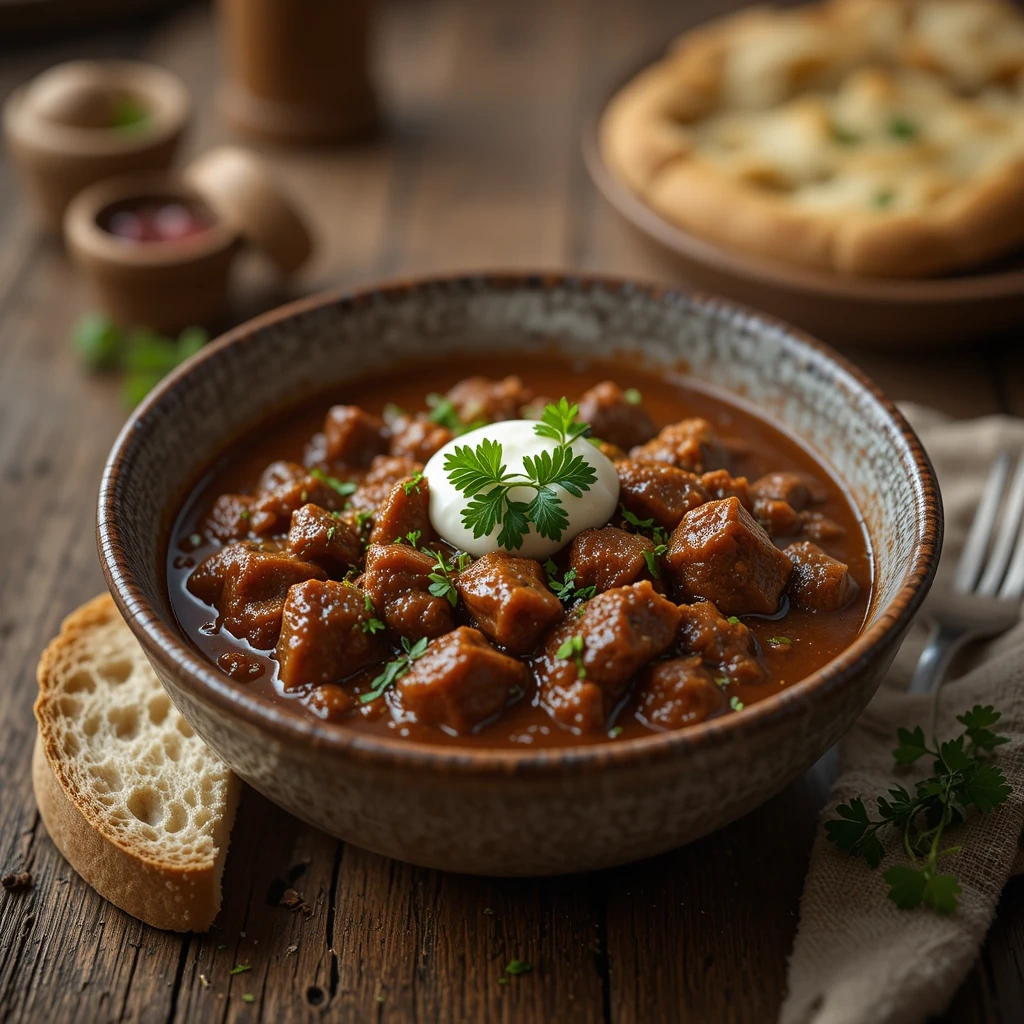
Elevate your comfort food repertoire with the All-American Beef Stew by J. Kenji López-Alt on Serious Eats. This meticulously crafted recipe emphasizes deep, robust flavors and tender textures through techniques like searing beef steaks before cubing, incorporating umami-rich ingredients such as tomato paste, Worcestershire sauce, anchovies, and soy sauce, and enhancing the sauce’s body with gelatin. The stew features two batches of vegetables for optimal texture and flavor, and it’s slow-cooked in the oven to ensure even cooking and a glossy, rich sauce. Perfect for those seeking a hearty, flavor-packed dish that goes beyond the ordinary.Serious Eats+2serious-eat.com+2Serious Eats+2Serious Eats+1serious-eat.com+1
Storing and Reheating Leftover Beef Stew
If you find yourself with leftover beef stew, proper storage and reheating techniques can help maintain its quality and flavor. Allow the stew to cool to room temperature before transferring it to an airtight container or resealable bags for storage in the refrigerator or freezer. When reheating, do so gently over low heat to prevent overcooking or scorching.
Adding a splash of broth or water can help restore any lost moisture and prevent the stew from becoming too thick during reheating. To further extend its shelf life, consider portioning leftover stew into individual servings before freezing. This allows for easy reheating of smaller portions as needed without compromising the quality of the entire batch.
By following these storage and reheating guidelines, you can enjoy your beef stew for several days or even weeks after its initial preparation without sacrificing its delicious flavors. 5 Common Mistakes to Avoid and Their Solutions 1. Overcrowding the pot: When browning the beef, overcrowding the pot can lead to steaming rather than browning.
To avoid this, brown the meat in batches, ensuring each piece has enough space to develop a golden crust. 2. Skipping the flour dredge: Dredging the beef in flour before browning helps create a flavorful crust and thickens the stew as it cooks.
Skipping this step can result in a thinner, less rich broth. 3. Adding vegetables too early: Adding delicate vegetables too early in the cooking process can cause them to become mushy.
To prevent this, add them towards the end of cooking or choose heartier vegetables that can withstand longer cooking times. 4. Neglecting seasoning: Proper seasoning is essential for a flavorful beef stew.
Taste and adjust seasoning throughout the cooking process to ensure a well-balanced dish. 5. Rushing the cooking process: Beef stew benefits from slow, gentle cooking to allow flavors to develop and meat to become tender.
If you rush this process, you might end up with tough meat and flavors that haven’t fully matured. Patience is key when preparing a perfect beef stew. By being mindful of these common mistakes and implementing their solutions, you can avoid potential pitfalls and ensure that your beef stew turns out beautifully every time.
FAQs
Which beef cuts are ideal for making stew?
How should I prepare and season the ingredients for beef stew?
What is the best cooking method for making beef stew?
What vegetables and herbs can I add to enhance the flavor of my beef stew?
How can I achieve the perfect consistency for my beef stew?
What are some serving and garnishing suggestions for beef stew?
How should I store and reheat leftover beef stew?
What are some common mistakes to avoid when making beef stew and their solutions?
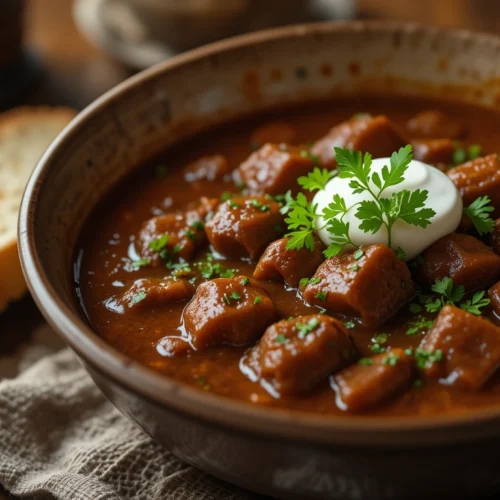
beef stew recipe
Ingredients
- Beef chuck round, or brisket (cuts with good marbling)
- Salt
- Pepper
- Flour
- Onions
- Carrots
- Celery
- Garlic
- Fresh thyme
- Rosemary
- Bay leaves
- Potatoes
- Peas
- Broth or water
- Pros:
- Uses cuts of beef that become tender with slow cooking.
- Emphasizes proper seasoning of both beef and vegetables.
- Offers multiple cooking method options stovetop, slow cooker, pressure cooker.
- Encourages the use of fresh herbs for enhanced flavor.
- Provides tips for achieving the perfect stew consistency.
- Includes suggestions for serving and garnishing.
- Offers guidance on storing and reheating leftovers.
- Addresses common mistakes and their solutions.
- Cons:
- None explicitly mentioned, but potential cons based on content:
- Requires a relatively long cooking time.
- Some ingredients might require pre-planning and shopping.
Instructions
- Choose a cut of beef with good marbling, such as chuck, round, or brisket. Cut into uniform cubes.
- Pat the beef cubes dry with paper towels and season generously with salt and pepper.
- Dredge the seasoned beef in flour to create a flavorful crust and help thicken the stew.
- Sauté onions, carrots, and celery in the pot used to brown the beef to absorb the rich flavors.
- Add the beef and sautéed vegetables to a heavy-bottomed pot, Dutch oven, slow cooker, or pressure cooker.
- Add fresh herbs like thyme, rosemary, and bay leaves to infuse the stew with aromatic notes.
- Add broth or water to cover the ingredients.
- Simmer on the stovetop, cook in a slow cooker, or pressure cook until the beef is tender and the vegetables are cooked through.
- Monitor the stew during cooking and add additional broth or water if needed to maintain the desired consistency.
- If the stew is too thin, thicken it by creating a slurry with flour or cornstarch and adding it gradually until reaching the desired thickness.
- Allow the stew to rest for a short period after cooking to allow the flavors to blend and the stew to achieve its ideal consistency.
- Garnish with a sprinkle of freshly chopped parsley or a dollop of sour cream before serving.
- Serve with crusty bread or fluffy mashed potatoes to complement the flavors and textures of the stew.


3 thoughts on “7 Easy Steps to the Perfect Beef Stew Recipe”